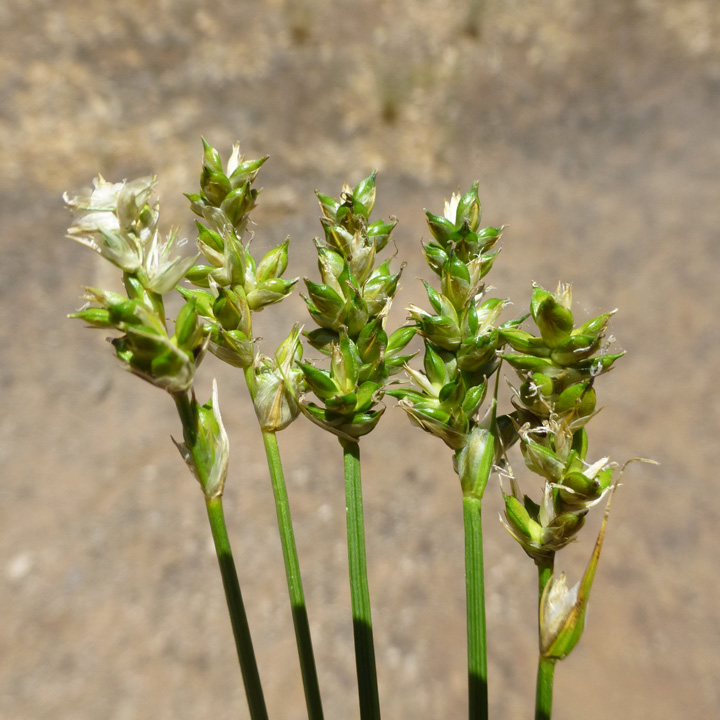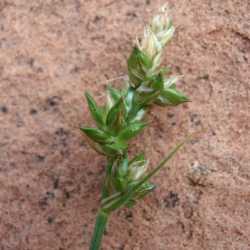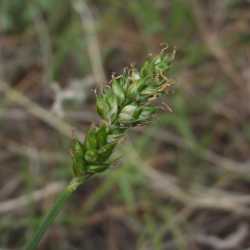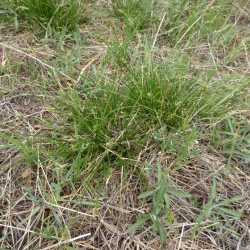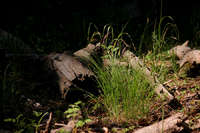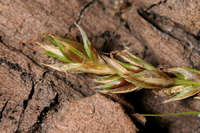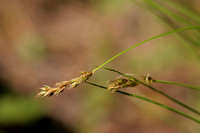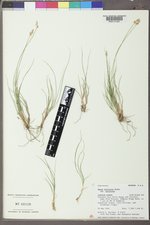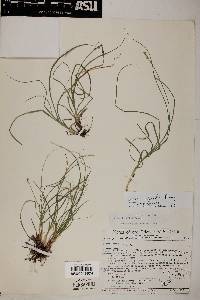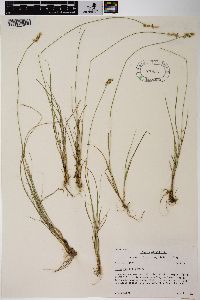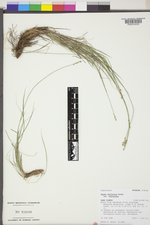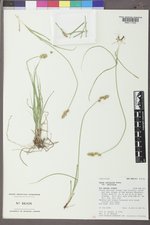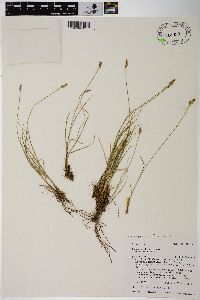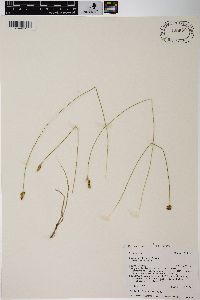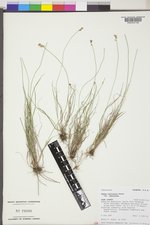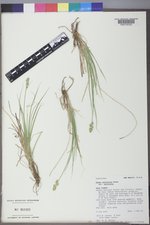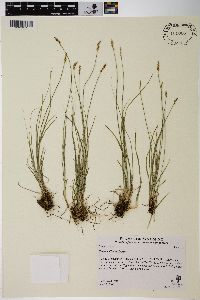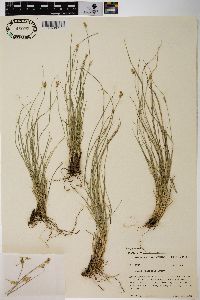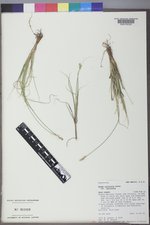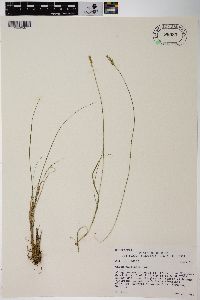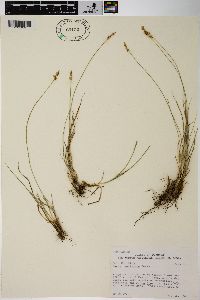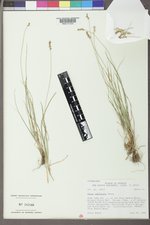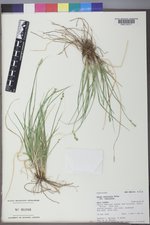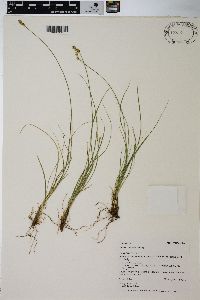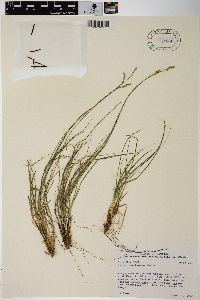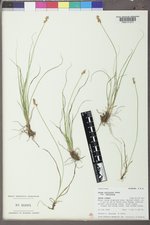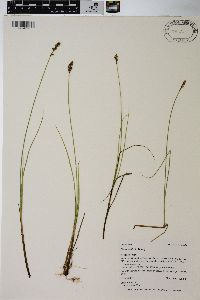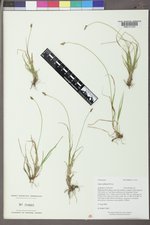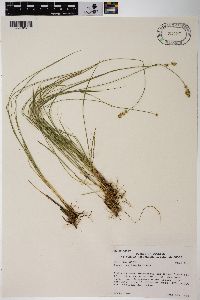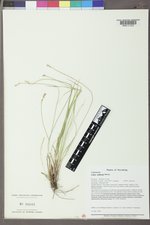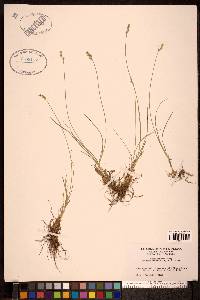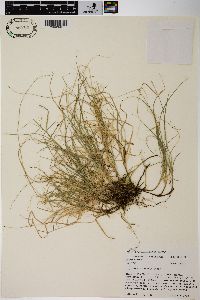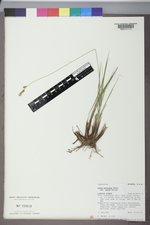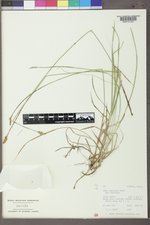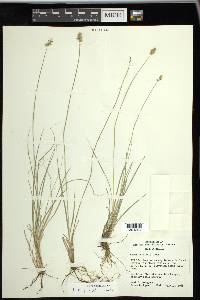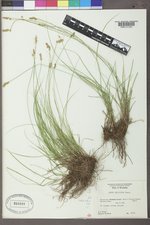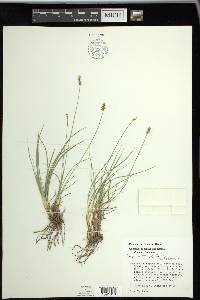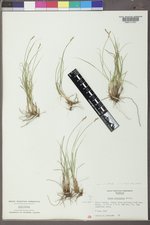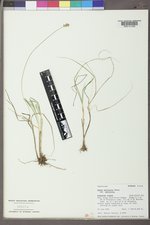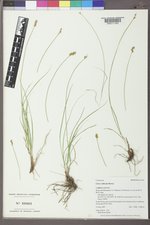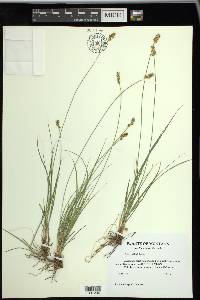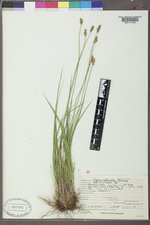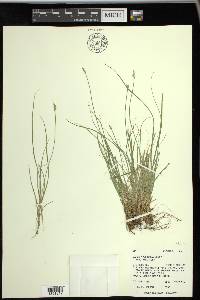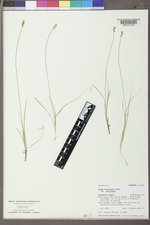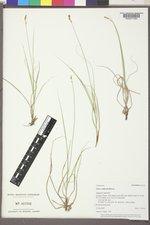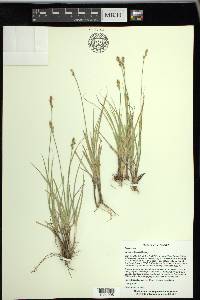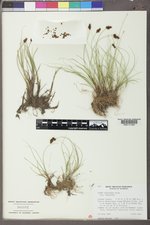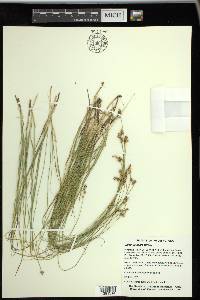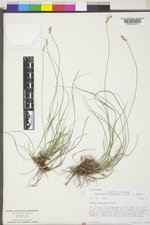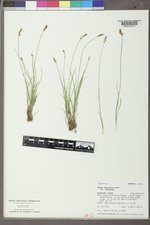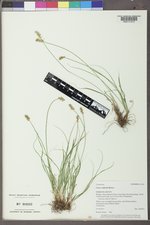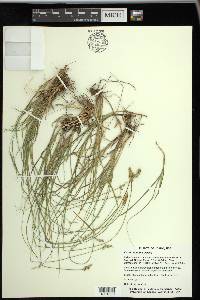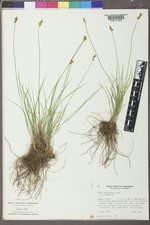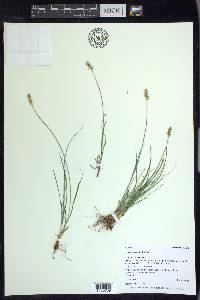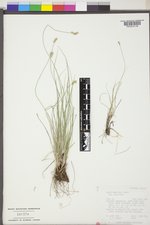Carex vallicola
|
|
|
|
Family: Cyperaceae
Rusby's sedge, more...Valley Sedge
[Carex brevisquama, moreCarex phaeolepis , Carex rusbyi Mackenzie, Carex vagans , Carex vallicola var. hidalgensis , Carex vallicola var. rusbyi (Mackenzie) F.J. Herm.] |
Plants without conspicuous rhizomes. Culms 12-60 cm, 1-1.3 mm wide basally, 0.5-1 mm wide distally. Leaves: sheaths tight, green, fronts hyaline; ligules less than 2 mm, wider than long; widest leaf blades 1-3 mm wide, papillose adaxially. Inflorescences with 5-10 crowded spikes, 0.5-3 cm × 5-8 mm; proximal bracts to 1(-3) cm; spikes with 2-10 ascending perigynia. Pistillate scales hyaline or pale brown with green 1-3-veined center, ovate, 2.8-3.2 × 1.8-2.6 mm, body slightly shorter than to length of perigynium, apex acute to short-awned. Anthers 1.8-2.3 mm. Perigynia brown, abaxial face 7-15-veined proximally, otherwise veinless or obscurely veined, 3.3-4 × 1.8-2.3 mm, base of perigynium spongy, thickened and longitudinally striate adaxially, spongy region 0.7-1 mm, margins serrulate to subentire distally; beak 0.5-1 mm, apical teeth 0.1-0.3 mm. Stigmas straight or slightly twisted, 0.05 mm wide. Achenes ovate to circular, 1.6-2.7 × 1.5-2 mm. Fruiting spring-early summer. Dry to mesic hillsides, grasslands, thickets, open forests; 500-3000 m; B.C.; Ariz., Calif., Colo., Idaho, Mont., Nev., N.Mex., Oreg., S.Dak., Utah, Wash., Wyo.; Mexico (Hidalgo). FNA 2002, Cronquist et al. 1977 Common Name: valley sedge Duration: Perennial Nativity: Native Lifeform: Graminoid General: Clustered on short, stout, freely rooting rhizome to having inconspicuous rhizomes, stems 12-60 cm tall, 1-1.5 mm wide at base, 0.5-1 mm wide near tip. Vegetative: Leaves all clustered near the base, generally shorter than stems, slender, flat 1-3 mm wide, papillose above, sheaths tight, green with hyaline fronts, ligules less than 2 mm. Inflorescence: Bracts subtending the spikes short, inconspicuous and sheathless, less than 1 cm, 5-10 crowded spikes above, 0.5-3 cm long by 5-8 mm wide, spikes with 2-10 ascending perigynia, androgynous; pistillate scales hyaline to pale brown or green with 1-3 veined center, ovate, 2.5-3.2 mm long by 1.5-2.5 mm wide, body shorter than length of perigynia, apex acute to short awned; perigynia brown, face 7-15 mm below, otherwise veinless, 3-4 mm long by about 2 mm long, base of perigynium spongy, thickened and longitudinally striate above, margins serrulate with beak 0.5-1 mm; achenes ovate to circular, 1.5-2.5 mm long by 1.5-2 mm wide. Ecology: Found on moist to moderately dry slopes from 7,000-9,500 ft (2134-2896 m); flowers April-August. Notes: In our region there are two varieties: var. vallicola and var. rusbyi. These have never been documented in SODN parks but are both within the realm of possibility. Of the two, var. rusbyi is more likely to be found. This is a cespitose sedge most similar to Carex occidentalis. In Carex occidentalis, the pistillate scales cover the body of the perigynia, while in C. vallicola they are shorter, exposing more of the perigynia. The perigynia in Carex vallicola are plumper and more distended by the achene, such that in many cases the marginal nerves have been pushed slightly onto the ventral surface, while in C. occidentalis the marginal nerves stay at the margin of the plano-convex perigynia. In Carex vallicola, the perigynia spread more irregularly in each spike, giving the inflorescence a less smooth overall feel than in C. occidentalis. (Notes: Max Licher and Glenn Rink 2012) Ethnobotany: Unknown Etymology: Carex is the classical Latin name for the genus, while vallicola comes from Latin vallis for valley and the ending -cola for dwelling in or inhabiting. Synonyms: None Editor: SBuckley, 2010 |
|
|
|

